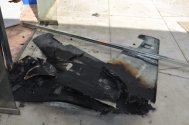I don't know much about the precise timings of the pulse doppler radar on the Tor-M1 to make an educated assessment, but doesn't its tracking radar (as separate from its pulse doppler radar which is for missile guidance) also have a digital signals processor for "blind speed" targets that discriminates against passive interference i.e. natural and artificial formations to overcome exactly this deficit?This engagement seemed to high for a commercial drone of the type you were thinking.
I think another matter to take into consideration is whether these SAM systems, especially the older ones, can even detect and track those small drones. Most of them will be flying relatively low and at a relatively low speed. Therefore they will be in a radar signal return zone of the side lobe beam which is clutter heavy as it scatters off terrain, buildings, etc.
To remove clutter, older radars rely on Doppler shift which makes it possible to differentiate signals based on their radial speed. Using this information a SAM radar interested in detecting aircraft can remove clutter signal by filtering any data with a radial speed say less than 100 kph. This makes the radar blind to objects moving at a slower speed. Therefore, a small drone has a good chance of falling within this blind zone of the radar and flying up to the radar undetected.
Theoretically, even at high altitude, if you fly in a circle around an older pulse doppler radar you may be invisible to it because your radial velocity will remain zero.
And doesn't the M1 also have an optical tracker for additional redundancy, like the Strela-10?


